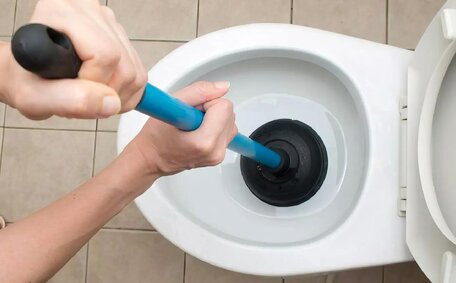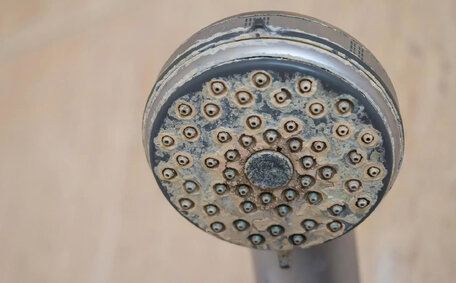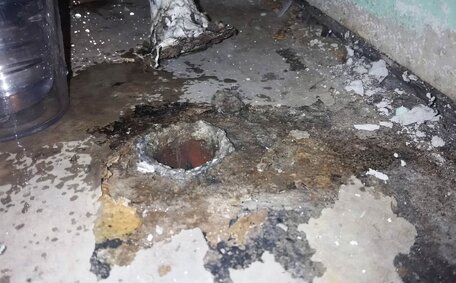Introduction to Sediment Pollution and Drain Blockages
Sediment pollution occurs when soil particles and organic matter are carried into waterways and drains. Fine sediment, including clay, silt, and sand, is often a result of soil erosion caused by water runoff.
Accumulating sediment can lead to significant blockages in drains and sewer systems over time.
As leading plumbers servicing Emu Plains and surrounding Sydney suburbs, Emu Plains Plumbing understands the impact soil erosion can have on drainage systems. Our guide provides property owners with strategies to prevent sediment blockages, focusing on correct drainage installation and ongoing maintenance.
Read on to learn more about:
- What causes sediment pollution and how it leads to drain blockages
- Preventative strategies such as correct pipe gradient and drainage, use of silt traps, gully pits and inspection shafts
- Regular maintenance like drain inspections, high pressure jetting and professional drain clearing
- Innovative solutions including silt bags, stormwater filters and drainage remediation
Where Sediment Comes From and How It Enters Drains
Sediment enters drainage systems from a variety of sources. The most common contributors are:
- Natural soil erosion - Wind and rain gradually erode topsoil. This loosened sediment is easily transported by surface water into drains during wet weather.
- Construction sites - Land clearing and excavation exposes soil that can be washed offsite into stormwater drains. Improper site controls exacerbate sediment runoff issues.
- Poor landscaping - Inadequate vegetation, retaining walls or drainage channels can lead to unchecked erosion across properties. This often flows into street gutters connected to main drains.
While soil erosion is natural, human activities have substantially accelerated this process, impacting drain pipe integrity. It’s estimated over 5 million tonnes of soil is lost to watercourses annually in Australia alone. This also contributes to biodiversity decline as sediment smothers river habitats and causes algal blooms due to nutrient loads.
As sediment-laden water flows towards waterways, the speed can slow, allowing particles to settle out of suspension. Over time, the accumulation of mineral deposits and organic matter can result in significant blockages. Properly designed drainage systems with the right gradient and capacity promote increased flow rates, aiding sediment transport and reducing blockages.
Preventing Sediment Buildup Before It Becomes An Issue
When it comes to preventing sediment buildup in drains, the key is being proactive with proper installation and diligent maintenance long before major blockages occur.
Several practical measures can effectively minimise the entry of sediment into drainage systems:
- Stabilise bare soil areas with vegetation, jute matting, or soil-binding agents like spray-on polymers
- Use sediment traps such as rock check dams, silt fences, and straw wattles in construction and land-development projects
- Use drain inlet filters, gully basket traps or sump pits to capture sediment on site before it enters pipes
- Install sand-slotted or basket-wrapped pipes that allow water through but filter out finer particles
- Frequently check and clear drains, pits and grates to remove accumulated sediment before buildup becomes significant
- Conduct professional high pressure drain cleaning every year to keep pipes sediment-free
Crucially, licensed plumbers must correctly install drainage systems, ensuring suitable gradient and capacity for expected water volumes and soil types. Consulting with professionals can help prevent erosion and reduce future sedimentation in drainage systems.
Staying on top of inspection and maintenance saves money in the long run compared to emergency drain unblocking and repairs. Implementing preventative solutions will also help meet council stormwater management guidelines.
Clearing Blocked Drains Caused By Sediment
When sediment accumulation has already caused drain blockages, careful cleaning is required to restore proper water flow without damaging pipes. There are several methods we recommend for clearing out soil and organic deposits:
Manual Drain Clearing
Hand tools such as scoops, rakes, and rods enable direct soil removal from access points, bypassing the need for chemicals. It involves carefully scraping sediment away from drain walls bit-by-bit to avoid scratches or cracks.
Persistent agitation aids in dislodging stubborn mineral deposits. Removing all extracted material is crucial to restoring unobstructed water flow. Be aware that protein-based waste can cause odour issues.
High Pressure Water Jetting
Specialised jetting units direct a concentrated stream of high pressure water down pipes to scour sediment away. Advanced nozzles can target specific areas and push through thick organic layers that tools would struggle with. Although efficient, high pressure jetting can displace sediment downstream, suggesting the need for consistent maintenance to prevent future settling.
Natural Drain Cleaning Solutions
Mild sediment blockages can be addressed by dissolving deposits with a mixture of boiling water, baking soda, and vinegar poured into drains. Granular sodium hydroxide is also an effective dissolving agent but must be handled carefully to avoid chemical burns.
Enzymatic drain cleaners employ bacteria to degrade organic matter responsible for fouling. Severely clogged pipes may need several treatments for progressive clearance using this method.
When tackling accumulated sediment, we recommend starting with manual labour before resorting to chemicals, high pressure water or mechanical augers which run the risk of pipe damage if improperly used. Proactively addressing issues before major buildup occurs through comprehensive preventative measures is key.
Innovative Plumbing Solutions To Handle Sediment
Advanced solutions go beyond routine drainage maintenance to effectively manage sediment entering pipes. Two of the most effective options we recommend are stormwater treatment devices and silt bags.
Stormwater Treatment Solutions
Stormwater treatment devices act as measures to filter sediment and trap contaminants prior to entering the drainage system. They operate using various processes like sedimentation, filtration, floatation or absorption to improve downstream water quality.
Common treatment solutions include:
- Wetlands - Stormwater is directed into planted shallow marsh areas allowing sediment to settle out while vegetation filters pollutants
- Retention basins - Large open ponds that temporarily store runoff so heavy sediment can sink to the bottom before controlled release
- Infiltration systems - Porous structures like trenches, wells and porous pavement that allow water to soak into surrounding soil while filtering sediment
- Filter strips - Grassed channels that help sediment settle out and vegetation uptake nutrients from runoff before it reaches drains
- Swirl concentrators - Use centrifugal forces to spin sediment out of flows into collection chambers for easy removal
- Media filtration - Various material layers like gravel, sand and fabric traps sediment as stormwater trickles through
Correctly implemented, these stormwater treatment solutions can capture 50% to 80% of sediment, depending on specific site conditions and available resources.
Silt Bags
Silt bags offer an affordable, portable solution for sediment control in smaller drains. They are geotextile filters held open by a frame that simply secure over the drain inlet to screen out soil particles. As the fabric slows the flow, sediment is filtered out, letting water drain into the pipe unimpeded.
With regular maintenance to remove built up sediment, silt bags help prevent organics and debris washing into drainage systems. They are versatile solutions, equally viable for homes, building sites or events needing temporary sediment barriers.
Innovative sediment control technology offers pragmatic means to address particle pollution and adhere to environmental regulations. Minimising sediment runoff helps protect water quality and aquatic life by reducing turbidity and preventing nutrient surges that cause algal blooms.
When To Call A Professional Plumber
While clearing blocked drains may seem simple, dealing with substantial sediment build-up usually requires professional expertise and tools. If you encounter any of the following conditions, we advise seeking professional assistance from Emu Plains Plumbing:
- Complete blockages with no water drainage at all
- Overflows, leaks or cracks in pipelines caused by excessive pressure
- Persistent foul odours coming from drains
- Multiple drains are clogged throughout the property
- Drain issues reoccur shortly after amateur clearing attempts
Our team have the specialised jetting, scoping and pipe repair equipment to safely and efficiently tackle sediment blockages beyond the capabilities of DIY methods. By providing long-term solutions to prevent sediment buildup, we help you save time, money, and effort.
Don’t hesitate to call 1300 349 338 or email us if drain sediment becomes a recurring issue. Our qualified plumbers service Emu Plains, Sydney and surrounding regions 24/7.






